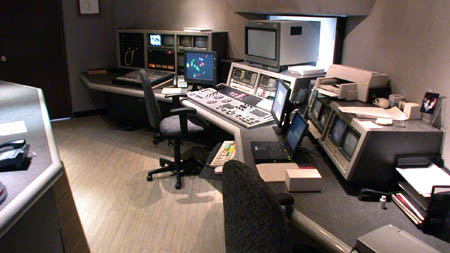
Before Jon joined Crest National he was a customer of the Crest motion picture laboratory. He acted as a producer/cameraman creating industrial and commercial projects for national clients, including Owens-Corning Fiberglass, Boeing, Toledo Edison, McKenna Associates and others. One of his biggest frustration of the times (mid 1970s) was the lack of facilities for "post production" of film images to the video world. (See Project Gallery Production Times)
Crests owners ask Jon to use this frustration in creating a design for a new Crest Video Division. An adjunct of services engineered to bring a marriage of film laboratory services and video production systems together. Jon stepped up to the challenge and joined Crest National as its founding video employee.
The first step in the marriage solution for 1976 was the RCA TK-28 film chain, serial number 04, installed on the second floor of Crest's film laboratory. This film chain soon became the flagship system and became heavily booked by the promo department of the ABC television network. The requirement at the time; the transfer of 35mm, cut work-print, then when available the answerprints of network television shows, to 2" quad, 1" type A, and a 3/4" Umatic cassette to be used in the creation of on air promotional advertising. Jon was bothered by the quality of the on screen images from the dirty workprint film supplied. He answered the problem with the creation of Crest's exclusive Solid State Liquid Gate technology, removing up to 95% of visible dirt and editors grease pencil markings. A vist to Crest in those days would have found the likes of The Love Boat, Berretta, Charlie's Angles, Happy Days, Dynasty, Laverne & Shirley or the record setting mini-series Roots running on the "film chain".
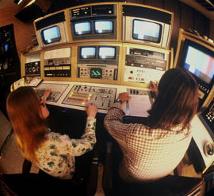
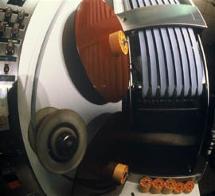
Original Crest National Control Point Laboratory Film Processing
This film laboratory marriage wasn't complete with just the conversion of film images to television recordings. At the time the international exchange format for programming was film, not American standard NTSC videotape. Many of the top network programs were recorded on tape and required a conversion process to be viewed in the other world standards. Jon and Crest National developed the Chroma Q2, tape to film process. Hundreds of episodes of All In the Family, The Jefferson's, Barney Miller, Hello Larry and others were converted to film negatives, then laboratory release prints created for distribution to the European markets. The power hungry, multi-rack DICE "digital" standards converter was just new to the market, but the European television facilities actually desired film over videotape playback.
In the mastering of film to tape for "made for television" product, the simple film chain system worked quite satisfactorily, however for the motion picture studios, problems existed. Hollywood did not make all theatrical product in the 4:3 aspect ratio needed for television transmission. Black borders would appear on the top and bottom of movies filmed in other aspect ratios and in those days the FCC even outlawed these "letterbox" transmissions. To solve the problem of scene by scene positioning and desired color correction would require the dreams of PDP11/8080 programmers, and the use of new advanced hardware. In 1979 Crest National introduced the production community to, the second delivered to Hollywood, flying spot scanner. The Rank Cintel Mark III, telecine with Digiscan had arrived.
1980 brought the improved Mark IIIB scanner, transferring in both 525 NTSC and 625 PAL, and with this, true International Mastering began. Stanley Kubrick's 2001: A Space Odyssey was computer color corrected and pan & scanned for world distribution at Crest. This complex transfer would lead MGM Studios to generate, over time, 10,000 plus tapes that resided in Crest National's tape vaults.
In the master transfer of another MGM wide-screen project, Grand Prix, the image required extreme image position and size manipulation. Jon answered the challenge with CTM Zoom; full scene-by-scene image size and aspect correction. This same process was then utilized heavily in Douglas Trumble's Brainstorm.
The mid 1980s presented Jon with even a greater film challenge. Could a transfer system be built that would allow for scanning a 70mm film. The Studio, through contractual obligations, had allowed for Michael Cimino to hold total control over the mastering of his UA film Heavens Gate. The only version he desired to use for the Home Video master was his "road show" release. This epic, of course, only existed in 70mm wide screen film. The answer to the problem, after some design and experimentation with an existing scanner was - Yes it can!
The Studio swallowed twice when hearing the proposed cost, but could not commit to the solution due to an estimated six month construction period. Home Video in scheduling the release had a deadline of just two weeks for delivery of a completed master! Sorry but we couldn't deliver in that narrow time frame. This exercise however, did lay the seed for a major project to come.
Jon realized that with just about 135 films worldwide, having been shot in the 65/70mm 5 perforation tall frame height, meant the market for a large format telecine was very limited. The plans were laid away until a new use could be found. By the early 1990s new 65/70 formats had been created, and production was booming worldwide. The giant screen museum circuit, and special venue theaters were multipling rapidly. All theaters were universally demanding quality product and the production community had but one major problem; the cost for a giant frame film was extremely high.
Now was the time for a daily 65mm scanning system that would allow transfer of all formats of large frame productions, then offline edit "Avid" style, and finally conforming the film to match. This could have a tremendous impact on the large format bottom line. Crest National offered the production community UltraScan70, a solution that would transfer 65/70mm, in 5 perf, 8 perf, 10 perf and 15 perf variations to television images. Jon worked alongside industry leaders and with Eastman Kodak to devise a common format for a machine readable film Keycode manufactured into the 65mm original negative. This solving the final stumbling block in editing on tape and then conforming back the 65mm element for theatrical release.
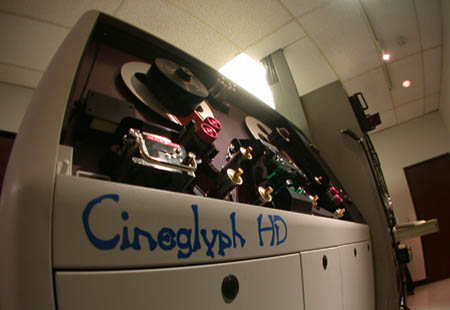
Crest National - 65/70mm Cineglyph Film Scanner
In the creation of the large format system Jon was presented with the challange of the 15 perforation horizontal format, Imax (tm). The transfer would requires a rotation of the image by 90 degrees. Utilizing the talents of Dave Walker and his Digital Audio and Video they developed a real time, high resolution image store, allowing for transfer of Imax projects. This relationship lead to the construction of DAV's Cineglyph high definition/data scanning system, of which Crest National has installed three units leading the way in HD transfer scanning. Large Format HD even led to projects in advanced 3D transfer and projection systems and servers for presentation commercially.
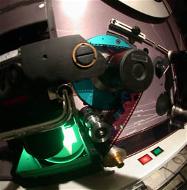
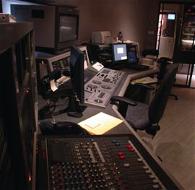
Transfering Original Negative Telecine A Control Suite

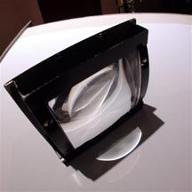
Custom Lens Created For Wide Format Scanning